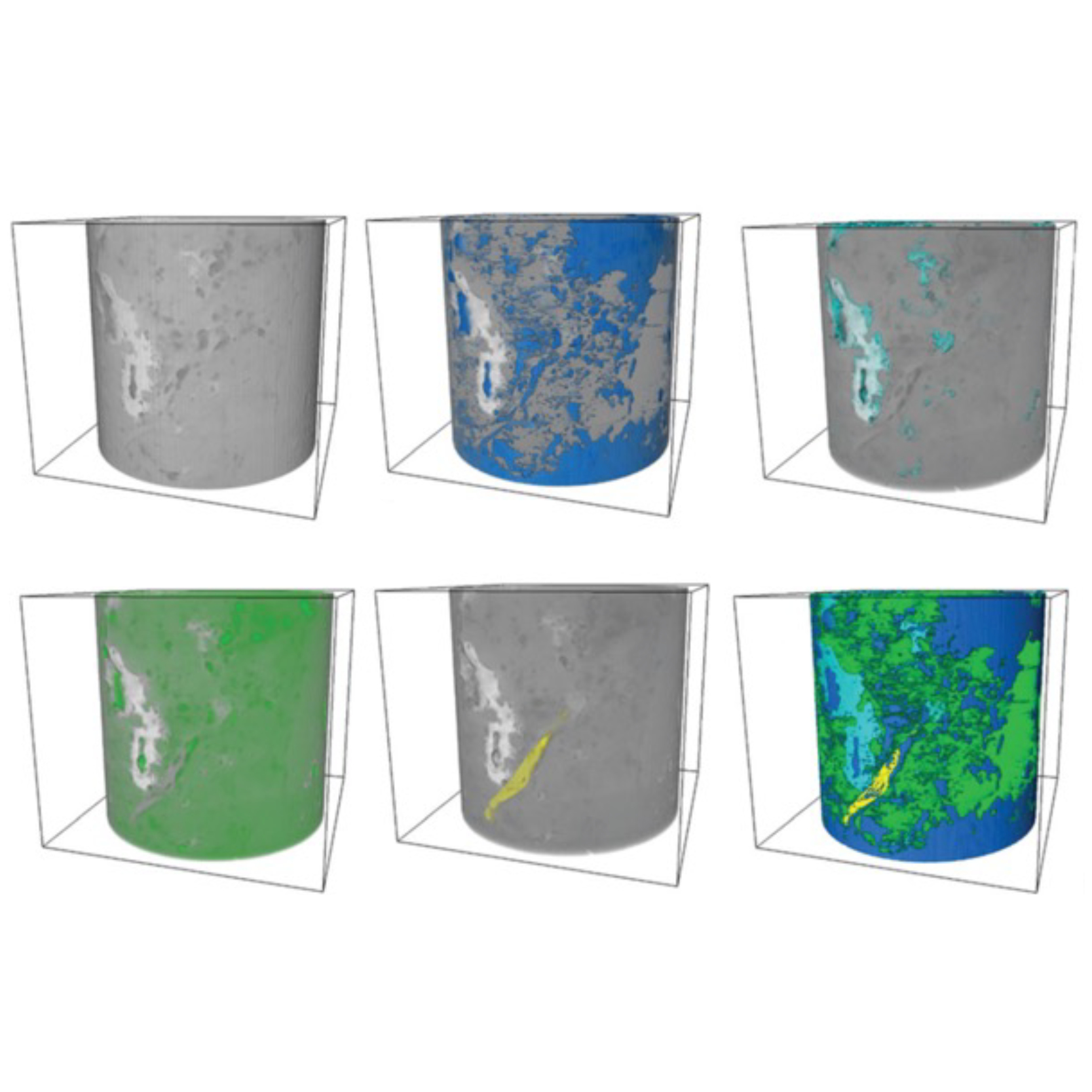
3D Microstructure of Soft Magnetic Elastomer Membrane
Soft magnetic elastomer membranes enable fast magnetic actuation under low fields. In our project, we… Read More
Events & Resources
News, Events and Resources from NXCT Partners
Understanding how gas bubbles form and evolve as magma ascends during a volcanic eruption may help volcanologists to model and predict explosive phases activity which are potentially very hazardous. Pyroclastic volcanic rocks contain preserved bubble voids which can be analysed using XCT to provide insights into eruption dynamics.
The hazards associated with volcanic eruptions depend on how explosively an eruption proceeds; the more explosive the eruption, the more far-reaching the consequences such as gas pollution and ash fallout. As magma ascends to the surface the pressure on the magma reduces which allows dissolved gases within it to form bubbles – much like when a bottle of fizzy drink is opened. When volcanic rocks are ejected during explosive eruptions, a record of the gas bubbles in the magma is preserved within the solidified material as frozen voids (vesicles). Measuring the number density, shapes and connectivity of the vesicles reveals how bubbles formed and interacted within the magma and will hopefully improve modelling of the mechanisms which drive explosive behaviour. XCT provides an excellent, non-destructive means for imaging vesicles within volcanic rocks in 3D. The goal of this project is to examine samples from a recent Icelandic eruption which transitioned from gentle to more explosive activity.
“As a first-year PhD student, I have received fantastic support from NXCT Manchester. I attended their extremely helpful full-day introductory training courses about XCT techniques and data processing using Avizo™ software. Dr Elizabeth Evans has assisted me with sample preparation and selecting the optimal instrument and settings for the best scanning outcomes. Three samples were examined using the Heliscan with the aim of producing a high-resolution reconstructed data set which would be straightforward to segment into the rock matrix and vesicles. The frankly beautiful data set was analysed using Avizo™ software at the NXCT Digital Imaging Laboratory within the Henry Royce Institute, Manchester. Interpretation of the porosity analysis outcomes is ongoing, and it is hoped that we will be able to include further case studies soon.”
Amy Kember, 1st year PhD Student (Post Graduate Research Teaching Associate), Department of Earth and Environmental Sciences, The University of Manchester


Images are included for two samples from different phases of the eruption. The contrast in the vesicle size distributions is clearly appreciated in the 3D volume renderings and even more so in the ortho slice views of the label analysis output where individual vesicles are identified and measured.
Collaborators: Dr Margaret Hartley, Dr Margherita Polacci
Equipment used: Sample preparation facilities, data acquisition using the Heliscan, data processing using PC workstations in the Digital Imaging Laboratory

Soft magnetic elastomer membranes enable fast magnetic actuation under low fields. In our project, we… Read More

Nowadays, the increasing capability of micro-manufacturing processes enables the manufacture of miniature products with extremely… Read More

Injection of CO2 into shale reservoirs to enhance gas recovery and simultaneously sequester greenhouse… Read More